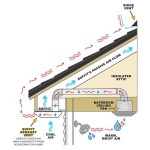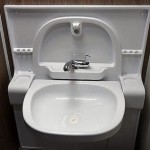How to Measure a Bathroom Sink for Replacement
Replacing a bathroom sink can significantly update the look and functionality of a bathroom. However, before selecting a new sink, accurate measurements of the existing sink and surrounding space are crucial. Proper measurements ensure the new sink is compatible with the existing plumbing, counter space, and overall bathroom design. This article provides a comprehensive guide on how to measure a bathroom sink for replacement, focusing on key dimensions and considerations.
Key Point 1: Identifying Sink Type and Mounting Style
Before taking any measurements, it is important to identify the type of bathroom sink currently installed. Different types of sinks require different measurement approaches. The most common types of bathroom sinks include:
Vessel Sinks: These sinks sit directly on top of the countertop. Measurements focus on the sink's diameter (if round), width and length (if rectangular or oval), and height.
Undermount Sinks: These sinks are installed beneath the countertop, with the countertop edge exposed. Measurements involve the cutout size in the countertop and the sink's overall dimensions.
Drop-in (Self-Rimming) Sinks: These sinks have a rim that rests on the countertop. Measurements are focused on the outer dimensions of the rim and the cutout size in the countertop.
Pedestal Sinks: These sinks are supported by a freestanding pedestal. Measurements should include the sink's width, depth, height, and the pedestal's dimensions (if being replaced).
Wall-Mounted Sinks: These sinks are attached directly to the wall. Measurements should focus on the sink's width, depth, height, and the location of mounting points on the wall.
Understanding the mounting style will dictate which dimensions are most critical for a successful replacement.
Key Point 2: Gathering Necessary Tools and Materials
Accurate measurements require the right tools. The following tools and materials are recommended:
Measuring Tape: A retractable metal measuring tape is essential for accurate measurements. Choose one that clearly displays both inches and centimeters.
Pencil and Paper: A pencil and paper are needed to record measurements as they are taken. It's helpful to sketch a rough outline of the sink and surrounding area to label each measurement clearly.
Level: A level is useful for ensuring the countertop and sink are properly aligned, especially for wall-mounted or pedestal sinks.
Straight Edge or Ruler: A straight edge or ruler can be helpful for measuring smaller dimensions or confirming straight lines, particularly for rectangular sinks.
Digital Camera or Phone: Taking photos of the existing sink and its installation can be helpful for future reference, especially when shopping for a replacement sink. It can highlight details that might be forgotten or overlooked.
Safety Glasses/Goggles: While not directly used for measuring, wearing safety glasses is crucial during any disassembly process of the old sink to protect against debris.
Having these tools readily available will streamline the measurement process and improve accuracy.
Key Point 3: Taking Accurate Measurements of the Existing Sink and Countertop
Once the sink type is identified and the necessary tools are gathered, the measurement process can begin. Each dimension should be measured carefully and recorded accurately.
Overall Sink Dimensions (Width, Length, Depth/Height): Measure the widest point of the sink from left to right (width) and the longest point from front to back (length). For depth, measure from the top of the sink to the bottom of the bowl. For vessel sinks, measure the height from the countertop to the highest point of the sink.
Bowl Dimensions: Measure the width, length, and depth of the sink bowl itself. This is particularly important for undermount and drop-in sinks, as it determines the usable space within the sink.
Countertop Cutout Dimensions (for Undermount and Drop-in Sinks): Carefully measure the existing cutout in the countertop. This measurement is crucial for ensuring the new sink fits properly. Remove the old sink carefully and measure the inner dimensions of the cutout. Note whether the corners are rounded or square.
Faucet Hole Configuration and Spacing: Determine the number of faucet holes and the distance between them. Standard configurations include single-hole, center-set (4-inch spacing), and widespread (8-inch spacing). Measure the diameter of the faucet holes as well. This ensures compatibility with the existing or planned faucet.
Drain Hole Diameter: Measure the diameter of the drain hole in the sink. Standard drain hole sizes are typically 1.25 inches or 1.5 inches. This measurement is essential for selecting a compatible drain assembly.
Distance from Wall to Drain (for Wall-Mounted Sinks): For wall-mounted sinks, measure the distance from the wall to the center of the drain. This measurement is critical for ensuring the drain pipe aligns properly with the existing plumbing.
Pedestal Base Dimensions (for Pedestal Sinks): If replacing the pedestal as well, measure the width, length, and height of the pedestal base. Note the location of any mounting points on the floor. This ensures the new pedestal fits the available space and can be securely installed.
Overflow Hole Location (if applicable): If the sink has an overflow hole, note its location in relation to the drain hole and other features. This can be helpful in selecting a replacement sink with a similar overflow configuration.
Countertop Thickness: Measure the thickness of the countertop, especially for undermount sinks. This is needed to ensure the proper clips and mounting hardware can be used.
Available Space Around the Sink: Measure the available space around the sink, including the distance to the wall, adjacent cabinets, and other fixtures. This helps ensure the new sink is not too large for the space and allows for comfortable use.
Photograph Details and Documentation: As measurements are taken, photograph the installation from multiple angles. Annotate the photographs with the measurements. Store the written measurements and photographs together. This provides a comprehensive record of the existing sink and its installation context.
Additional Considerations and Tips
Account for Overhang: Consider the desired overhang of the sink over the countertop. This is particularly relevant for drop-in sinks. Ensure the new sink’s rim will cover the countertop cutout adequately.
Check Plumbing Connections: Examine the existing plumbing connections, including the water supply lines and drain pipe. Note the location and type of fittings. This will help determine if any plumbing modifications are needed during the installation of the new sink.
Review Building Codes: Consult local building codes and regulations regarding bathroom sink installations. Some codes may specify minimum sink sizes or require specific types of plumbing connections.
Consider Accessibility Requirements: If accessibility is a concern, consider the guidelines of the Americans with Disabilities Act (ADA). These guidelines specify minimum clearances and mounting heights for bathroom sinks to accommodate users with disabilities.
Double-Check Measurements: After taking all measurements, double-check them for accuracy. Even small errors can lead to problems during installation. It may be helpful to have someone else review the measurements as well.
When to Seek Professional Help: If the sink installation is complex or involves significant plumbing modifications, consider consulting a professional plumber or contractor. They can provide expert advice and ensure the installation is done correctly and safely.
Consider the Sink Material: Different sink materials (e.g., porcelain, stainless steel, stone) have different properties. Consider the weight of the new sink material, especially for undermount installations as the countertop needs to be able to support the weight of the sink when it is full of water.
Measuring a bathroom sink for replacement requires attention to detail and accuracy. By following these guidelines and taking careful measurements, you can ensure a smooth and successful replacement process.

How To Measure A Bathroom Sink Size Lavatory For Replacement
How To Measure For A Bathroom Basin Or Sink Victoriaplum Com

How To Measure A Bathroom Sink Size Lavatory For Replacement

How To Measure A Basin

3 Ways To Measure A Kitchen Sink Wikihow

How To Measure For A Bathroom Basin Or Sink Victoriaplum Com

How To Measure A Vanity Sink Bathroom Dimensions Standard Size Vevano
How To Measure A Vanity Sink Bathroom Dimensions Standard Size Vevano

How To Measure A Bathroom Faucet The Home Depot

How To Measure For A Bathroom Basin Or Sink Victoriaplum Com
Related Posts







